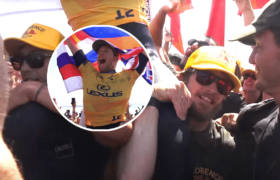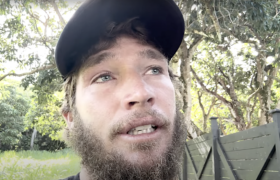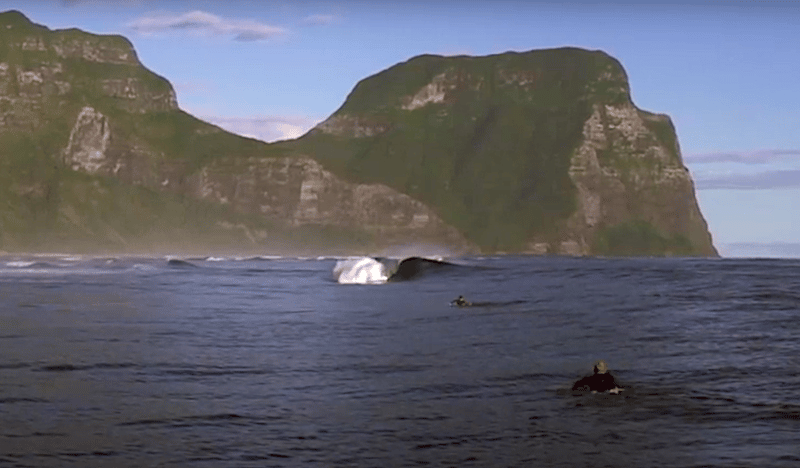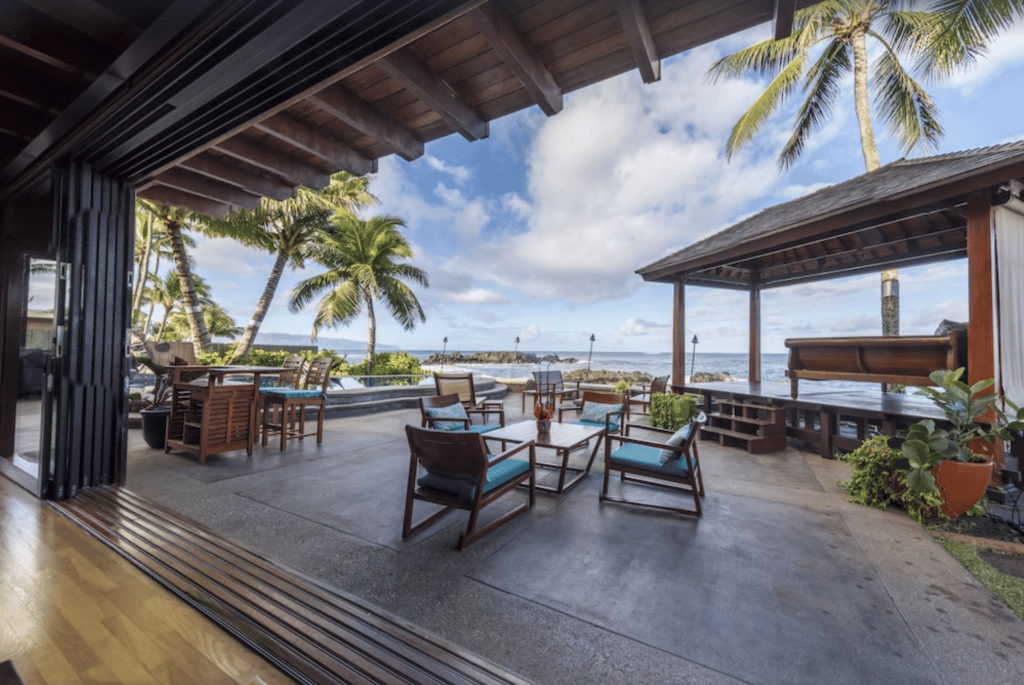I shall prevail.
The elation hit 70 miles outside of Oklahoma City and I thought, “So here we go!” The Volkswagen, new throttle body installed, was zipping along the 40 east at a comfortable pace though terror clawed at the edges of my already frayed psyche. Semi-trucks, or tractor trailers depending on your regional preference, outnumber cars 20 – 1 on this stretch of panhandle, growling, snarling, swaying. Driving felt like kicking a boogie board into a SUP-exclusive slab, if such a thing exists, and trying to poach a few corners.
Unnerving.
But there I was, anyhow, elated for hitting Weatherford, Oklahoma I saw a sign celebrating it as “home to astronaut Thomas P. Stafford.”
Never heard of him, no not ever, and if a minor league astronaut gets so celebrated, certainly Oklahoma City’s own Erik “ELo” Logan would be thusly lauded outside his home?
Who has a better story? One of twenty-four people that has flown to the moon or the boy with Spielberg-induced fear of the ocean overcoming all odds, thanks to the help of a magic wetsuit of armor, to rule over competitive professional surfing as CEO of the World Surf League?
Erik E. Lo. Logan, it goes without writing.
Punctuating my instinct, a glorious rainbow spread across the heavens, crowning Oklahoma City like a halo as if to say, “This is where you find your pot of gold. This is where the mythical non-surfing WSL fan springs from the ground like wheat or whatever grows in Oklahoma.”

The hour-ish of white knuckle dread flew by and then I was there. Oklahoma City. Home to The Aforementioned. Except there was no sign but… maybe it is etched on the people’s hearts? I checked in to the Sheraton Oklahoma City Downtown hotel ready to pounce, phone violently buzzing in pocket.
Wait. Why was it buzzing violently?
I checked and, if you can even believe, it was a message from Logan himself.
“OKC?!”
The epic quest had clearly taken on a life of its own.
“I’m here!” I responded. “Epic quest!”
He told me that the Skirvin, Oklahoma City’s oldest hotel, is haunted and “Then go to Norman. Have to see Barry Switzer.”
But let me pause the story here. I assumed Logan knew that I was in Oklahoma City due the public interest in my epic quest, riding along, wondering too if such a myth as the non-surfing WSL fan exists. Though how did he know that Barry Switzer is one of my favorite coaches of all time?
A beacon in my younger life?
For the illiterate, Barry Layne Switzer, born October 5, 1937, coached at the University of Oklahoma for sixteen years, winning three national championships and, then, in the National Football League for the Dallas Cowboys, winning the Super Bowl. He is a legend, owning one of the highest winning percentages in college history, and also one of three coaches to win both a college national championship and a Super Bowl.
But that’s not why he is one of my favorite coaches of all time. He is one of my favorite coaches of all time because he recruited the Brian Keith Bosworth to Oklahoma and The Boz absolutely ruled.
Utterly ruled.
I cannot afford any more time here but Brian Bosworth broke the mold. He played with a mohawk, got busted for shooting steroids, stripped off his jersey to reveal a shirt reading “NCAA: National Communists Against Athletes” when he was suspended.
Read his biography, like I did in elementary school, for inspiration.
Back to the story, I sat there, staring at my phone thinking, “If I could actually meet Barry Switzer from an ELo hookup, I would not be able to fun make the WSL for at least a week.” And what a power move. What a boss flex. Logan had wiped the floor with me, once, on a podcast. This, this right here, would kill me again. I’d be mush in Switzer’s hands, spooned right down, spackling the Wall of Positive Noise eternally in service of its CEO, or at least for a week or forever.
Logan sent me pictures of him and Barry Switzer, proving his bonafides, which had me swooning, then made extra good on his promise, group chatting me, Switzer and Switzer’s wife Becky with a kind introduction.

That rainbow?
Maybe ending in Norman, Oklahoma, home to the University of Oklahoma and Barry Switzer? Home to the non-surfing World Surf League fan? Absolute end of my thoroughly eroded credibility?
Terrified.
As it was late, at this point, and didn’t expect the Switzer’s to be up at such an hour but was mortified that Erik “ELo” Logan had wiped the floor with me once again. You don’t become an American tall tale, or the CEO of the World Surf League, without skills, I suppose.
I tossed and turned all night, checking my phone as soon as I woke.
“I don’t know you. That’s my purse!!”
Then…
“I have no idea what those last two comments are about I did not write those. Barry’s at the lake I will send this request to him. Hope all is well.”
Followed by…
“Dogs can’t look up.”
“Cats are always looking down.”
“Mice never frown.”
The number belonging to Barry Switzer’s wife had, apparently, been correct. Barry Switzer’s number now, apparently, belonged to a jokester who revealed, “I’ve had this number forever and still get calls for Barry AND Becky. Did y’all share this number at one point? We’re y’all married? I need the tea.’
To which Mrs. Switzer responded…
“Totally strange. Stop all messages to me.”
I hit both Mrs. Switzer and the stranger up, begging the former for a chance to meet her husband and shake his hand in over Brian Bosworth. Begging the interloper if he, or she, knew anything about competitive professional surfing.
Neither responded and though I lightly mourn the outcome, I am equally elated that I can now continue to fun make forever or at least a week.
As an aside, I asked frat-ish boys on the street, worker bees eating late at the restaurant, hotel desk staff, man who almost hit me with a car if they had ever heard of competitive professional surfing.
The shared answer was “no.”
And Barry Switzer may be but Oklahoma dustbowl in my dream’s wind but on I forge to Memphis, Tennessee and Elvis Presley’s Graceland.
Grace Land.
I shall prevail.
Listen here for more.











